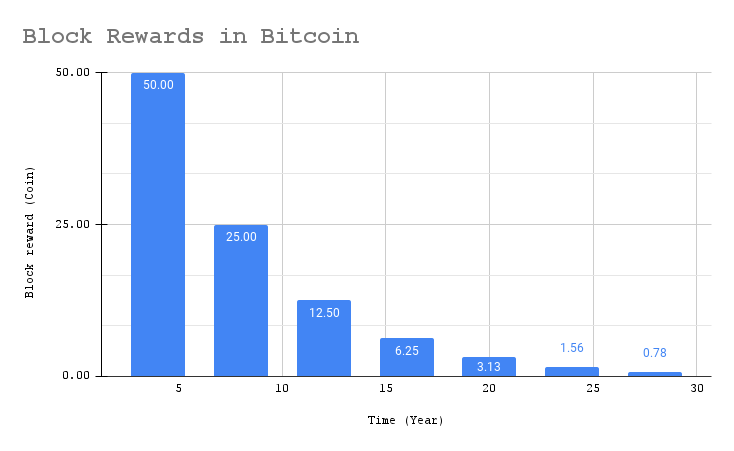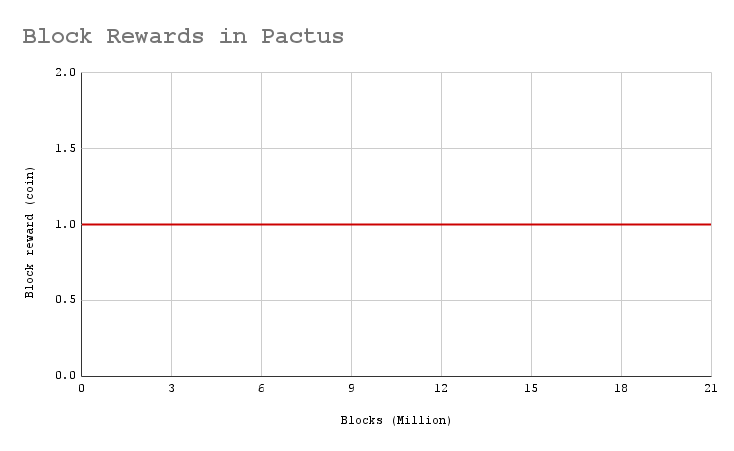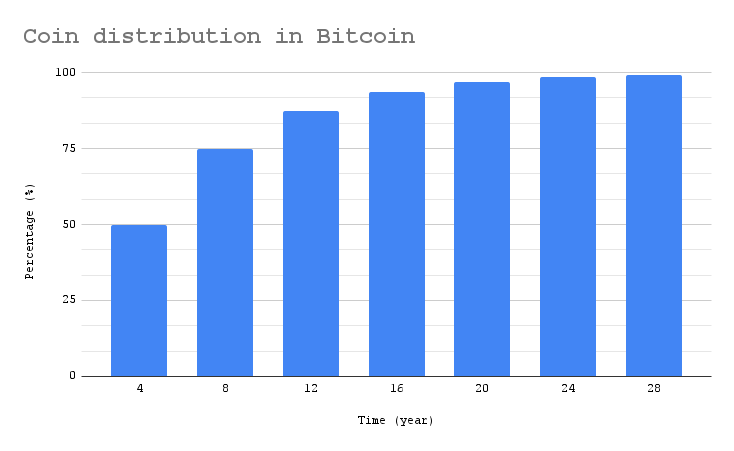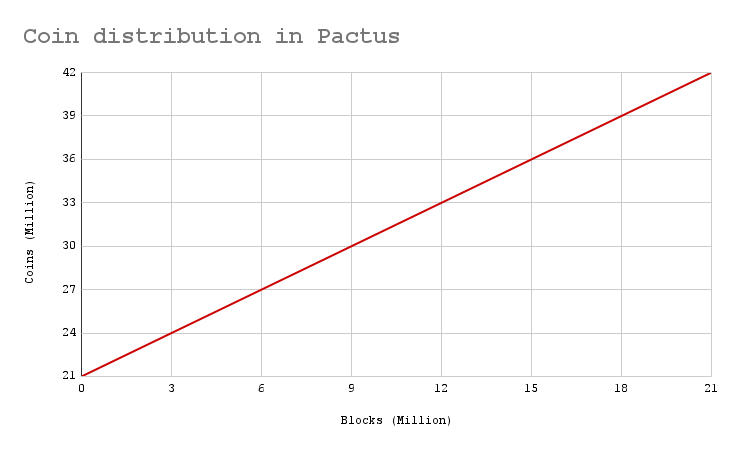Incentive
The incentive may help encourage nodes to stay honest.
In Pactus, rewards are given to validators for collecting valid transactions and creating new blocks. These rewards serve as an incentive for validators to participate in the consensus process and maintain the security and integrity of the network.
Flat Reward
To better understand the incentive model in Pactus, let’s compare it with the Bitcoin reward model. This comparison will help to understand how the incentive model works in Pactus.
| Pactus | Bitcoin |
|---|---|
| Consensus engine is Proof of Stake | Consensus engine is Proof of Work |
| Exactly every 10 seconds one block is minted | Around every 10 minutes one block is mined |
| Total supply is 42,000,000 coin | Total supply is 21,000,000 coin |
| Always one coin per block | Initial block reward is 50 coin |
| No halving | Halving happens every 4 years |
The halving mechanism in Bitcoin rewards early contributors more significantly. However, in a Proof-of-Stake blockchain, this mechanism can lead to wealth centralization, as early validators gain too much power based on their staked coins.
To promote fairer block rewards, Pactus has introduced a simple and straightforward incentive model called the “Flat Reward.” In this model, the block reward remains constant at one coin per block and does not change over time.


Coin Distribution
In Pactus, the coin distribution is linear. This linear distribution is a direct result of the Flat Reward system. Unlike other blockchains that have a curved distribution, Pactus maintains a consistent coin distribution.

